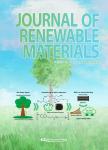Functionalised Poly(Vinyl Alcohol)/Graphene Oxide as Polymer Composite Electrolyte Membranes
作者机构:Instituto de Tecnología de Materiales(ITM)Universitat Politècnica de València(UPV)Camino de Vera s/nValenciaSpain Departament d’Enginyeria QuímicaEscola Tècnica Superior d’EnginyeriaUniversitat de València(UV)Av.de la Universitat s/nBurjassotSpain
出 版 物:《Journal of Renewable Materials》 (可再生材料杂志(英文))
年 卷 期:2019年第7卷第7期
页 面:655-665页
核心收录:
学科分类:08[工学] 0805[工学-材料科学与工程(可授工学、理学学位)] 080502[工学-材料学]
基 金:the support of the European Union through the European Regional Development Funds(ERDF) The Spanish Ministry of Economy,Industry and Competitiveness,is thanked for the research project POLYDECARBOCELL(ENE2017-86711-C3-1-R) The Spanish Ministry of Education,Culture and Sports is thanked for the FPU grant for O.Gil-Castell(FPU13/01916)
主 题:Direct ethanol fuel cell graphene oxide poly(vinyl alcohol) proton exchange membranes proton conductivity
摘 要:Crosslinked poly(vinyl alcohol)(PVA)based composite films were prepared as polyelectrolyte membranes for low temperature direct ethanol fuel cells(DEFC).The membranes were functionalised by means of the addition of graphene oxide(GO)and sulfonated graphene oxide(SGO)and crosslinked with sulfosuccinic acid(SSA).The chemical structure was corroborated and suitable thermal properties were *** the addition of GO and SGO slightly decreased the proton conductivity of the membranes,a significant reduction of the ethanol solution swelling and crossover was encountered,more relevant for those functionalised with *** general,the composite membranes were stable under simulated service *** addition of GO and SGO particles permitted to buffer the loss and almost retain similar proton conductivity than prior to *** membranes are alternative polyelectrolytes,which overcome current concerns of actual commercial membranes such as the high cost or the crossover phenomenon.



